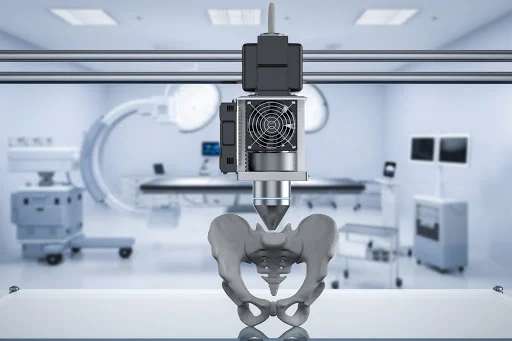The integration of 3D printing technology in prosthetics is transforming the field of healthcare by enabling customized, affordable, and efficient solutions for amputees. Traditional prosthetic manufacturing is often expensive, time-consuming, and lacks personalization. 3D printing offers an innovative approach, allowing tailor-made prosthetic limbs that enhance both comfort and functionality.
How 3D Printing is Changing Prosthetic Manufacturing
1. Customization for Individual Needs
- Personalized Fit: 3D scanning and modeling allow for prosthetics tailored to an individual’s anatomy, improving comfort and mobility.
- Adaptable Designs: Prosthetics can be designed for specific lifestyles, sports, or occupations, offering increased flexibility.
- Child-Friendly Solutions: As children outgrow prosthetic limbs quickly, 3D printing enables affordable, adjustable prosthetics to accommodate growth.
2. Cost-Effective and Affordable Production
- Lower Material Costs: Traditional prosthetics can cost thousands of dollars, whereas 3D-printed versions are significantly cheaper.
- Reduced Manufacturing Time: Instead of waiting weeks or months for a prosthetic limb, 3D printing shortens production time to days.
- Accessibility in Low-Income Regions: Nonprofit organizations and healthcare providers use 3D printing to create affordable prosthetic limbs for underserved communities.
3. Advanced Materials and Lightweight Designs
- Durable and Flexible Materials: Modern 3D-printed prosthetics utilize biocompatible plastics, carbon fiber, and metal composites for strength and longevity.
- Lightweight Construction: Unlike traditional prosthetics made of heavy metal components, 3D printing enables the creation of lightweight, ergonomic designs.
- Aesthetic and Functional Enhancements: Prosthetics can be designed with custom colors, patterns, and even artistic elements to boost user confidence.
Technological Innovations in 3D-Printed Prosthetics
1. AI and Machine Learning in Prosthetic Design
- AI algorithms analyze motion patterns and biomechanics, ensuring precise limb movement replication.
- Machine learning helps refine custom-fit designs based on user feedback and physiological data.
2. Integration of Robotics and Bionics
- Bionic prosthetics powered by electromyographic (EMG) sensors allow amputees to control artificial limbs using muscle signals.
- Some 3D-printed prosthetics incorporate haptic feedback systems, providing a sense of touch for improved usability.
3. Modular and Adaptive Prosthetic Systems
- Modular 3D-printed designs allow users to swap parts or upgrade components as needed.
- Some prosthetic limbs feature interchangeable tools for various activities such as writing, cycling, or playing musical instruments.
Real-World Applications and Success Stories
1. Humanitarian Efforts and NGOs
- Organizations like e-NABLE, Limbitless Solutions, and Open Bionics provide free or low-cost prosthetic limbs to individuals in need.
- Disaster-stricken regions and war-affected areas benefit from rapid prosthetic production for injured individuals.
2. Pediatric Prosthetics
- 3D printing enables the creation of affordable prosthetics for growing children, eliminating the financial burden of frequent replacements.
- Disney-themed prosthetics have been developed to encourage children to embrace their artificial limbs confidently.
3. Military and Veteran Rehabilitation
- 3D-printed prosthetics assist injured veterans, offering advanced mobility solutions.
- Prosthetics tailored for sports and high-impact activities allow veterans to engage in active lifestyles.
Challenges and Future Prospects in 3D-Printed Prosthetics
1. Durability and Material Limitations
- 3D-printed prosthetics, while cost-effective, may lack the durability of traditionally manufactured models.
- Continued advancements in stronger and more flexible materials are essential.
2. Regulatory and Medical Certification Issues
- Many 3D-printed prosthetics lack FDA or medical regulatory approval, creating hurdles in mass adoption.
- Standardized testing is needed to ensure safety and longevity.
3. Expanding Accessibility and Adoption
- More funding and investment in 3D printing labs and clinics are needed to increase global access.
- Partnerships between tech companies, healthcare institutions, and NGOs can accelerate widespread adoption.
3D printing is revolutionizing prosthetic design, offering affordable, customizable, and technologically advanced solutions that improve the lives of amputees worldwide.




